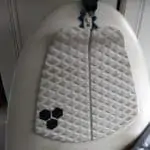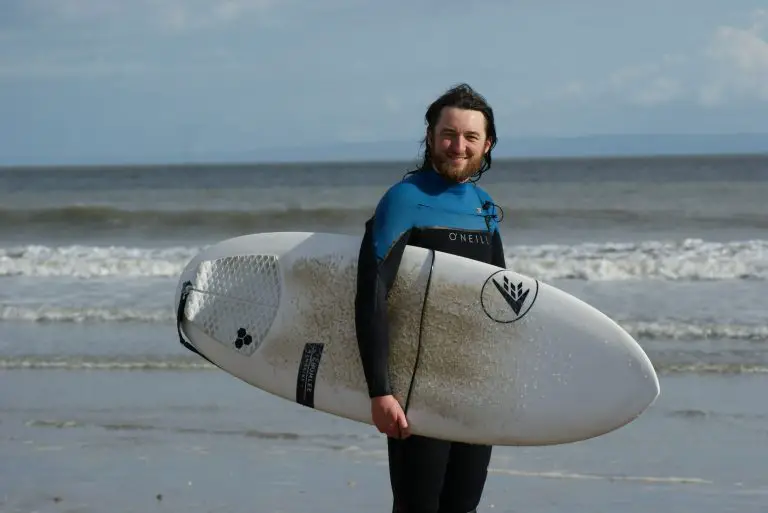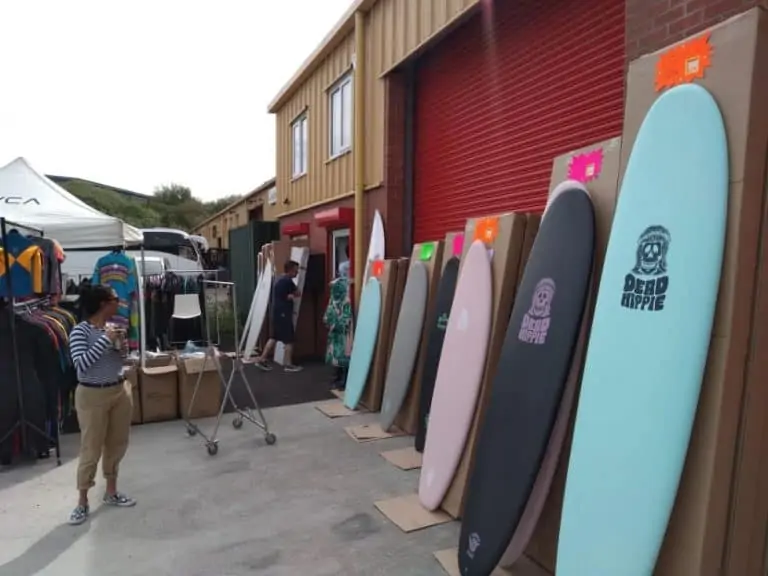Best Surfboard Shape for Beginners
Choosing the right shape surfboard will make it easy to catch and ride as many waves as possible. The more waves you catch, the better you will progress as a surfer.
When looking for a surfboard, as a beginner, you want something that is easy to paddle and has good buoyancy. Therefore, the bigger the surfboard, the better.
You may be tempted to choose the coolest shape or design, but it is important to choose a shape of board that compliments your abilities and surfing goals. Here are the best surfboard shapes for beginners:
The Longboard Surfboard
Longboards are normally between 9’ and 12′ in length and measure a width of around 20 to 24 inches. Longboard surfboards are defined by their full and round nose. Longboards offer the most stability, making it much easier to pop up and balance on your board.
This style will make it easier to paddle back out to the break faster and easier, increasing your wave count without taking up all your energy.
I would recommend starting with a longboard that is about 3 inches longer than your height. So, if you’re 5’8” to 6’0” tall, a 8’6” to 9’0” longboard is the ideal choice for you.
Not just for beginners, longboards are loved by those who surf daily or want to enjoy a slower surf.
Because of their size, they provide a level of stability that is perfect for beginners. In big surf, longboards will not be able to easily duck dive, so it makes paddling a little more of a swift cruise than other shapes on the market.
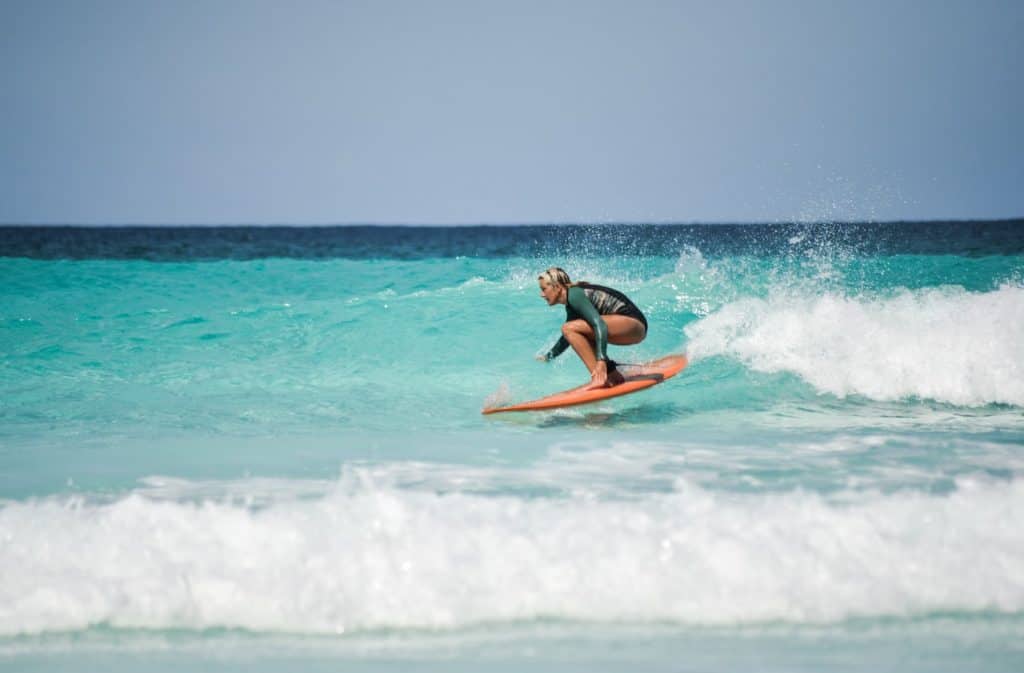
Photo Credit: Manon Duport on Unsplash
The Funboard Surfboard
Funboards come in all sorts of shapes and sizes, from mini eggs to hybrid shapes. Generally, a funboard, although it comes in almost any tail, rain or fin designs, covers anything with a fuller outline in the 6’ to 8’ range.
A funboard is the perfect next step for beginner surfers who want to experiment with different board shapes. With wide outlines, fuller rails, and lots of buoyancy.
This compact surfboard will help you feel snappier without compromising on wave count. The extra width makes a more stable and tolerant option, an important feature for beginners.
Funboards are ideal if you want to explore how responsive and maneuverable a surfboard can be.
The Egg Surfboard
Egg surfboards are the perfect mix between a longboard and shortboard. Ovular shaped with an egg-shaped nose, they are short and stubby. The broad surface area makes it an easy shape for beginners to stand on.
The thickness and width of the board will give surfers the ability to effortlessly paddle and stay afloat. They are the perfect transition board for surfers who want a more manoeuvrable board compared to the classic longboards.
Egg-shaped surfboards have a soft and rounded rail that tends to be more forgiving, perfect for beginners who still make mistakes.
The extra buoyancy will make it easier to balance and is more suited to riding smaller waves. This design of surfboard is usually medium in size, ranging between 6’ to 8’5″.
PS Check out my breakdown on balance boards for surfing to help you get more practice in out of the water!
The Fish Surfboard
The fish surfboard design lets you go faster in those slower messier breaking waves. Shorter and wider than shortboards, the added width will make it easier to balance on.
Due to their thickness, paddling in water is super easy. This retro shape is great for picking up smaller waves, ideal for beginners who are yet to hit those six-foot waves!
The fish surfboard is one of the lightest designs on the market, this makes it a great choice for kids who are interested in starting their journey to becoming a surfer.
Safe, lightweight and this design of board floats amazingly.
Mini-Longboards (Mini-mal)
Mini longboards of mini-mal (short for Malibu) have many of the same features of the longboard, but they are scaled down to approximately 7’0” to 8’10” range.
Mini longboards are versatile and suitable for those who want to paddle or for experienced surfers who want to try nose rides and play around with cheater fives.
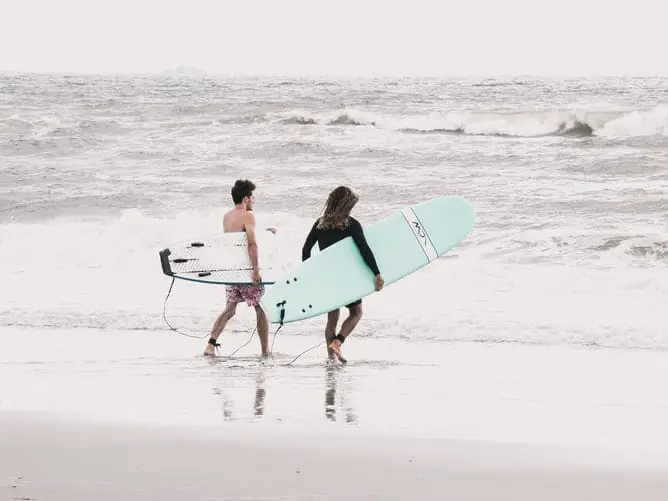
Photo Credit: Debby Hudson on Unsplash
Related Questions
What should I look for in a surfboard as a beginner?
Try to keep the surfboard about a foot to a foot and a half taller than you. The wider the surfboard the more stable it will plus it will be much easier to ride and stand.
We recommend choosing a board that measures 20 to 22 inches across as it will offer stability but will still fit underneath your arm. The thicker the surfboard is, the more buoyant it will be. Stay within 2-1/4 to 3 inches thick, dependent on your weight, to enjoy an easy paddle.
Surfboards come in a range of different construction types, the most common being polyester, epoxy or a soft-foam construction.
Soft foam boards are used by surf schools and are very forgiving, but their flexible fins will compromise performance, but this is only when it comes time to learn to turn on them, which is at the intermediate stage.
Harder surfboards made from epoxy or polyester will give you more room to progress and, if kept in a good condition, can last much longer.
What makes a good beginner surfboard?
When you are a beginner, you are still mastering the fundamentals. A good beginner surfboard shape is easy to paddle, has good buoyancy and is stable. You still also look for a board that is bigger, as you are looking for something that makes it easy to catch and ride waves.
How does the tail of a surfboard affect your surfing style?
The tail is the bottom part of the surfboard and can greatly affect your performance. Surfboard tails come in different shapes, performance characteristics and rocks. The shape will determine the way your board will respond to your movements as it reacts to the water flow.
A bulky tail design will offer surfers more speed, stability, and floatation; whereas a smaller tail will sink more into the water and will help the transition between rails.
Round and pin tails are more manageable if surfers are confronted with big waves. In small waves, the width of a swallow tail will allow surfers to maintain speed and stability.
Can you learn to surf on a shortboard surfboard?
Although possible, learning on a shortboard is not recommended since these surfboards make for much slower learning and progression. They are smaller in size, making them harder to paddle and stand up on. As such, shortboards are not recommended for learner surfers.
See above for my recommended surfboard shapes instead, with many much better options available.

